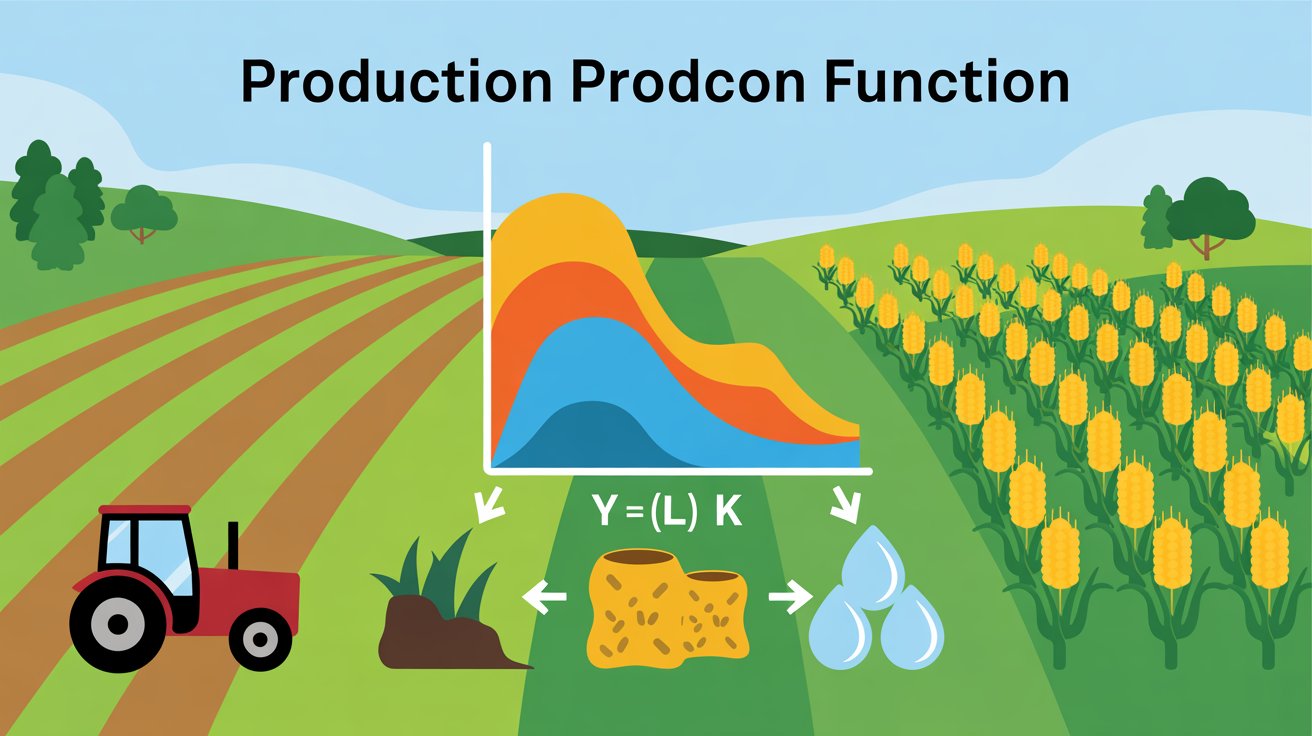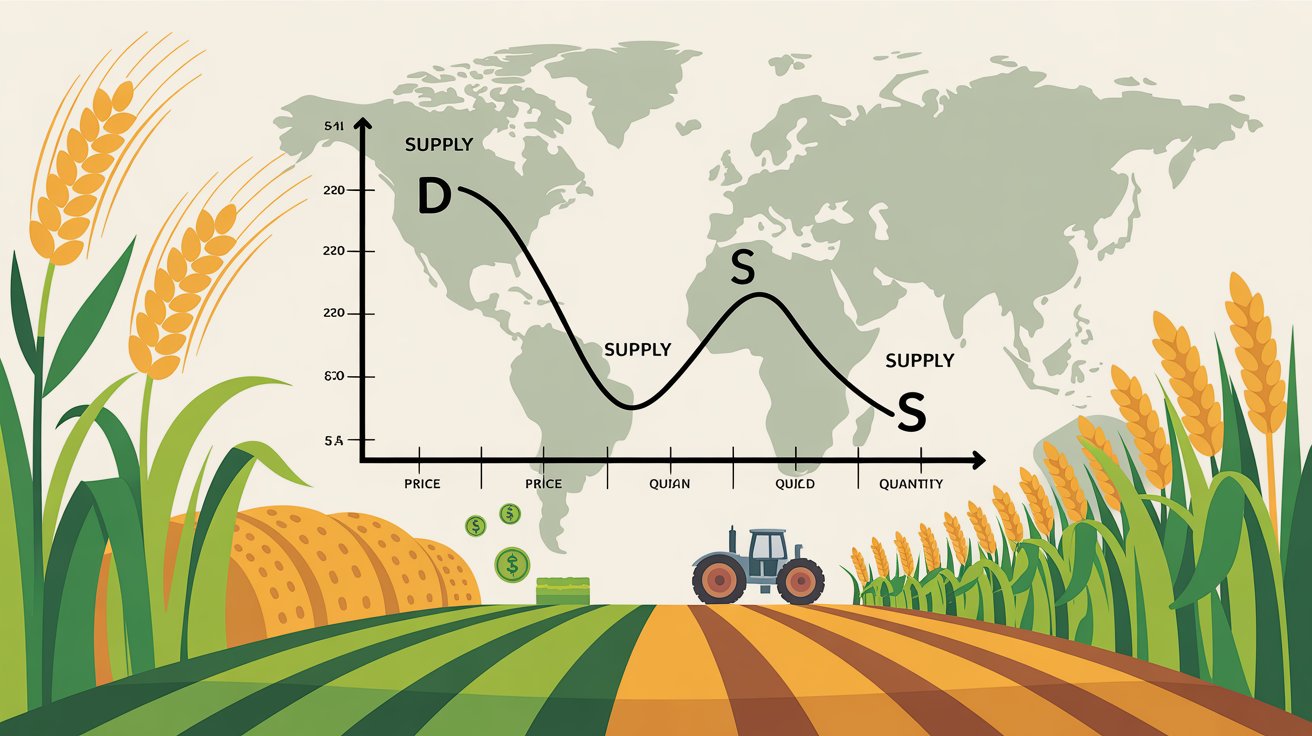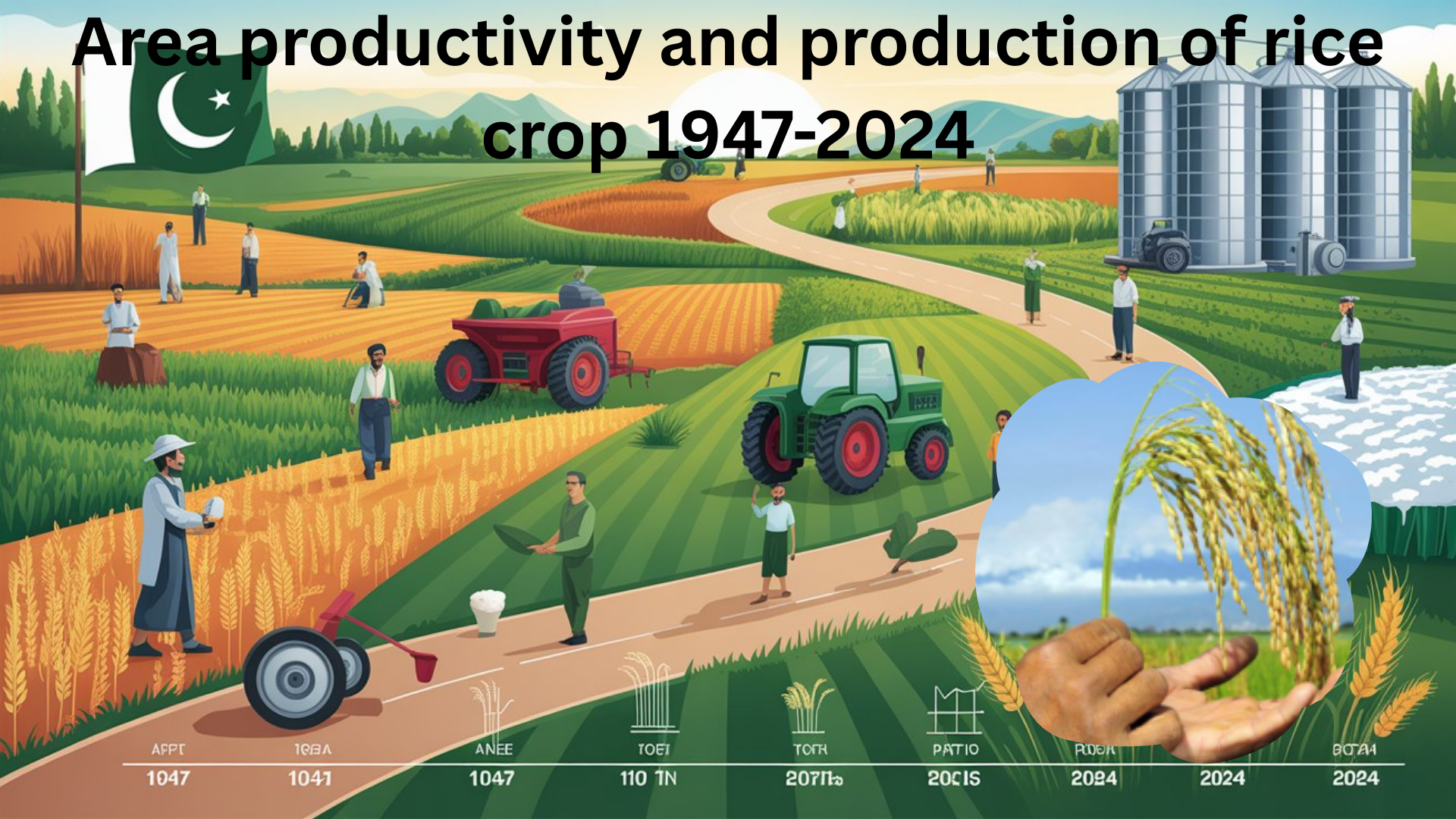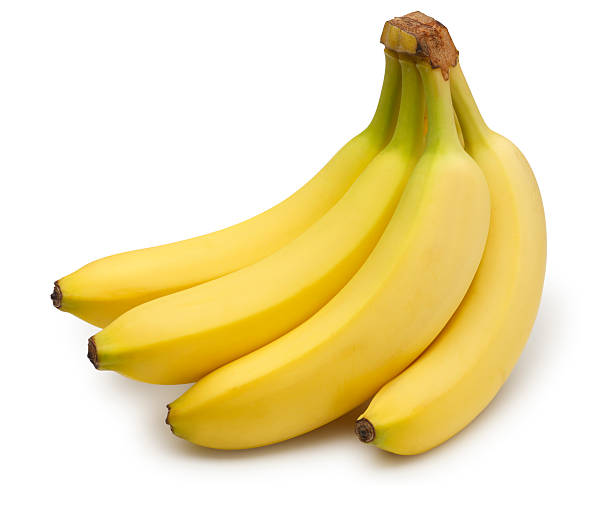Linear and Quadratic Production Model Simplifying agricultural planning with linear models Agricultural planning doesn’t have to be complicated. Linear production models are the workhorses of farm management—straightforward, practical, and surprisingly effective. These models assume a direct, proportional relationship between inputs and outputs. Picture this: for every pound of fertilizer you add, you get an additional […]
Category: Agriculture Economics
Agricultural economics examines how scarce resources are allocated in farming and food systems. At its core are the laws of supply and demand – basic microeconomic principles explaining how the quantity of crops produced (supply) and the quantity consumers want (demand) determine market prices. In agriculture, supply and demand interact under influences like weather, technology,
Demand and Supply in Agricultural Markets: A Student GuideRead More »
Castor seed (Ricinus communis) is a vital industrial oilseed crop known for its high oil content and diverse applications in pharmaceuticals, cosmetics, and lubricants. In Pakistan, castor seed cultivation has been a part of traditional dryland farming systems, especially in arid and semi-arid regions. This article explores the historical trends in the area, production, and
77 years Castor Seed Data in Pakistan: Area, Yield & ProductionRead More »
Introduction Inflation is a persistent economic challenge that affects every sector of society. In Pakistan, rising inflation has become a serious concern for policymakers and citizens alike. From the cost of groceries to utility bills, inflation touches the lives of millions of Pakistanis, especially low- and middle-income households. This article explores the causes, trends, and
Understanding Inflation in Pakistan: Causes, Trends, and Impact on Daily LifeRead More »
Area of Rice cultivation in Pakistan Source: CRS, PBS, Agriculture Statics of Pakistan Unit 000 acres YEAR Punjab Sindh KPK Balochistan Pakistan 1947-48 664 1137 28 123 1952 1948-49 736 1186 34 119 2075 1949-50 862 1280 38 125 2305 1950-51 872 1348 38 134 2392 1951-52 762 1249 38 135 2184 1952-53 770
Rice in Pakistan: Historical Trends in Area, Productivity, and Output (1947–2024)Read More »
Apples, known for their nutritional value and economic potential, have played a notable role in Pakistan’s horticulture sector. From a humble beginning of just 1.9 thousand acres in 1957-58, the area under apple cultivation in Pakistan has seen significant changes over the decades, driven by regional priorities, environmental conditions, and market demand. 📈 Growth Across
A Historical Overview of Apple Cultivation in Pakistan (1957–2023)Read More »
The Importance of Garlic in Pakistan Garlic (Allium sativum) is an important crop in Pakistan. People use it for cooking, medicine, and farming. Its strong smell and unique taste make it a key ingredient in Pakistani food. Additionally, it has many health benefits and plays a significant role in the economy. Nutritional and Medicinal Benefits
The Importance of Garlic in Pakistan: Health, Agriculture, and Economy”Read More »
Introduction Wheat is Pakistan’s staple food crop, playing a crucial role in ensuring food security and supporting the agricultural economy. Pakistan is among the world’s leading wheat-producing countries, with Punjab contributing the largest share, followed by Sindh, Khyber Pakhtunkhwa (KPK), and Balochistan. This article explores the importance of wheat, historical production trends, and a comparative
Comparative Study on Wheat Production in Pakistan: Importance, Trends, and ChallengesRead More »
Introduction Bananas are one of the most important fruit crops in Pakistan, contributing significantly to the country’s agriculture and economy. Banana production in Pakistan plays a crucial role in the agricultural sector, providing economic benefits and nutritional value to millions. The production of bananas is mainly concentrated in Sindh, followed by Punjab, Khyber Pakhtunkhwa (KPK),
The Importance and Trends of Banana Production in PakistanRead More »









